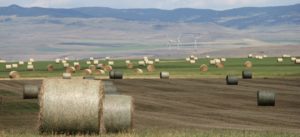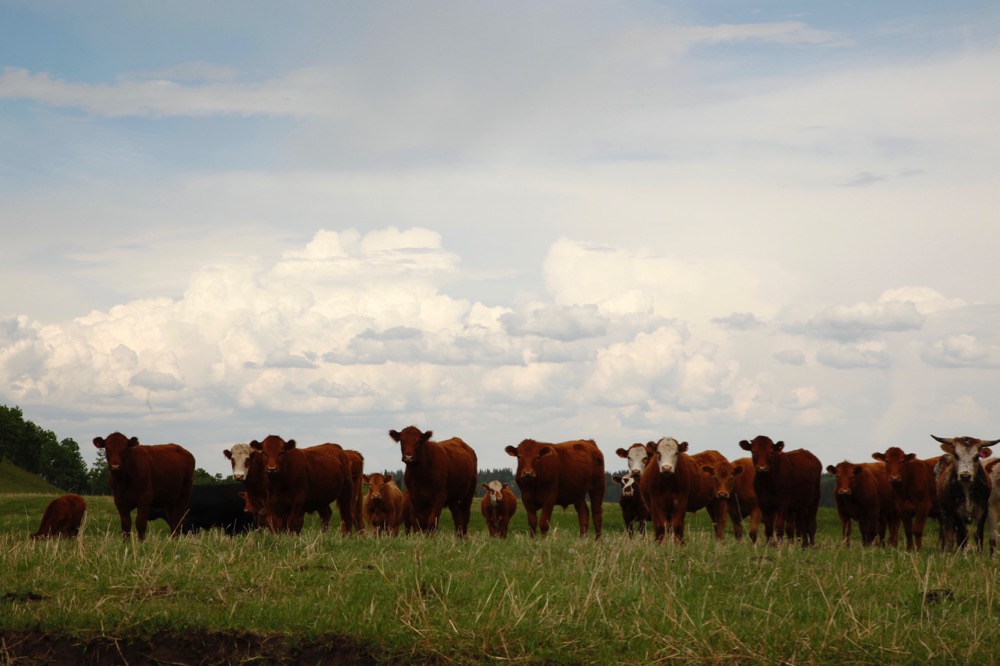Depending on your region of Western Canada, feed for cattle this winter might be in short supply. Does it make economic sense to feed cattle expensive feed? That’s the question Ted Nibourg, long-time Alberta Agriculture farm management specialist urges producers to pencil out before the feeding season begins.
In a recent article in the Alberta Agriculture newsletter Agri-News, Nibourg ran through a “what-if” scenario of feeding costs for a 100 head beef herd. In this example, it shows if a producer is paying 10 to 12 cents per pound for hay they might be losing some serious money.
Read Also
Some perspectives of what’s in store for 2022
By Lee Hart Between COVID-19, supply-chain disruptions and now the conflict in the Ukraine it seems like any calm or…
In the article Nibourg refers to the Cowbytes and Ranchers Risk and Return calculators he used in figuring out costs. You can click on the links in this article or both can be found on the Alberta Agriculture website at: www1.agric.gov.ab.ca
Following is the Agri-News article where Nibourg talks about feeding costs:
HAVE A SERIOUS LOOK AT WINTER FEEDING COSTS
High feed costs again in 2019 have many producers wondering about the economics of overwintering their cows. Ted Nibourg, farm business management specialist at the Alberta Ag-Info Centre, looks at the economic factors when developing a feed strategy for this winter.
 “The question,” says Nibourg, “Is it even feasible to keep cows? Some are liquidating their entire herds. Others are culling heavily, and many are trying to find economical ways of maintaining them.”
“The question,” says Nibourg, “Is it even feasible to keep cows? Some are liquidating their entire herds. Others are culling heavily, and many are trying to find economical ways of maintaining them.”
He says that the two main factors to consider in developing feeding economies are price and availability of feed.
“One factor to consider this winter will be the availability of quality forage. Parts of the province experienced drought again this summer while others suffered the other end of the spectrum. The wet areas of the province had difficulty getting their hay off dry and many producers resorted to putting their forage up as silage or haylage. This tends to solve the supply dilemma locally, but it greatly increases transportation costs to areas of reduced supply as much of what is being trucked is water.”
To arrive at daily feed costs, Nibourg ran some rations through CowBytes to add perspective to feed price  variations, and its effect on a producer’s bottom line.
variations, and its effect on a producer’s bottom line.
“The rations assumed 1,400 pound cows at mid-pregnancy. The barley-straw ration priced barley at $5 per bushel and barley straw at $50 per ton. The result was a ration that came to $2.20 per head per day. With a straight grass hay ration for hay priced at eight cents per lb., the daily cost increased to $2.75 per head. Hay priced at 10 cents per lb. jumped the daily cost to $3.40 per head. With hay at 12 cents per lb., the daily cost bounced up to $4.10 per head. “
Nibourg then ran the numbers through Rancher’s Risk and Return to provide insight into the effect varying feed prices have on a producer’s bottom line.
THE 100-HEAD HERD EXAMPLE
“Using a 100 head herd with a weaning percentage of 85 per cent, it assumed that 650 lb. steer calves averaged $210 per cwt and 600 lb. heifer calves averaged $190 per cwt. The feed costs for the barley-straw ration amounted to 53 per cent of the total production costs for the herd and resulted in a  gross margin of $13,250. A hay ration priced at eight cents per lb. increased feed costs to 58.5 per cent of total production costs and reduced the gross margin to minus $250 – basically break even. Hay at 10 cents per lb. jumped feed costs to 63.5 per cent of the total, resulting in a negative $15,131 gross margin. Feed costs increased to 68 per cent of total production costs for hay priced at 12 cents per lb. resulted in a loss of $30,350.”
gross margin of $13,250. A hay ration priced at eight cents per lb. increased feed costs to 58.5 per cent of total production costs and reduced the gross margin to minus $250 – basically break even. Hay at 10 cents per lb. jumped feed costs to 63.5 per cent of the total, resulting in a negative $15,131 gross margin. Feed costs increased to 68 per cent of total production costs for hay priced at 12 cents per lb. resulted in a loss of $30,350.”
“Feed costs this winter are basically charges against next year’s calf crop,” he explains. “Break evens in the fall of 2020 for this example herd on a barley-straw ration, comes in at $176 per cwt for next year’s calves. The herd on eight cent per lb. hay ration would need $202 per cwt to break even. At 10 cents per lb., break evens are $229 per cwt. Break evens for 12 cent per lb. hay are $258 per cwt. This analysis underscores the necessity of managing feed costs for a cow-calf operator. Feed costs are by and far the largest component of the production costs in a cow-calf operation.”












